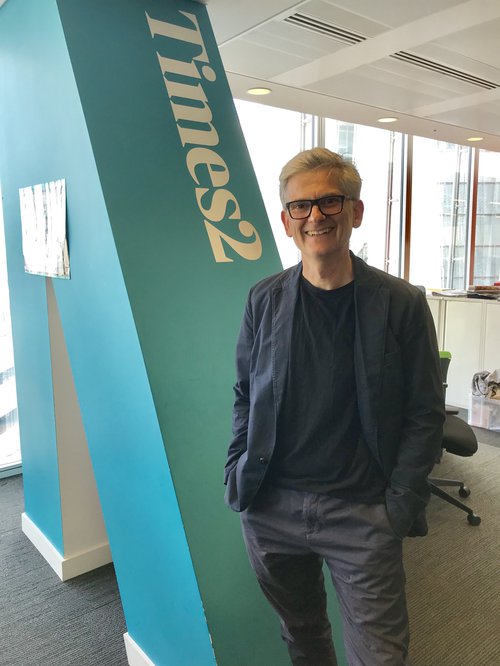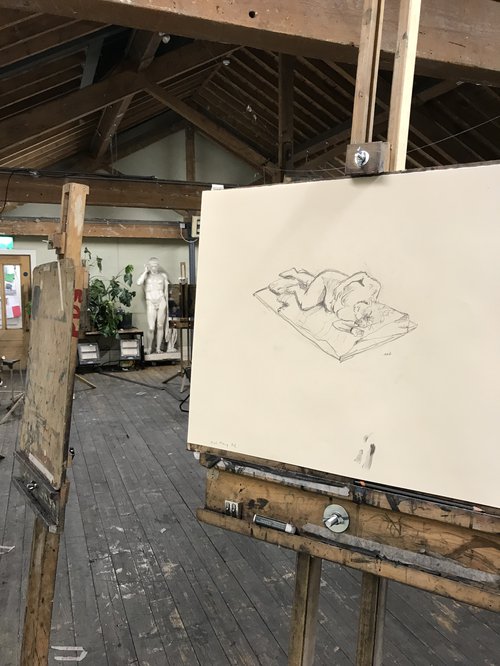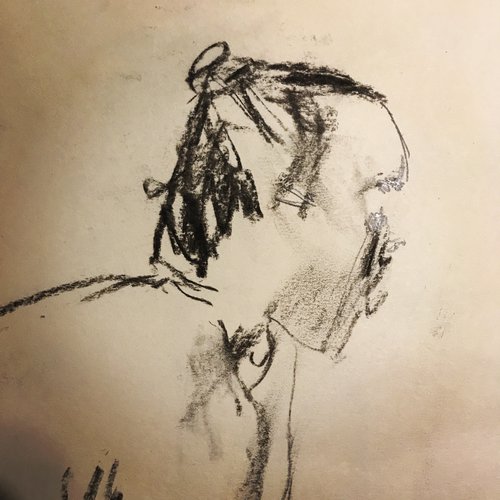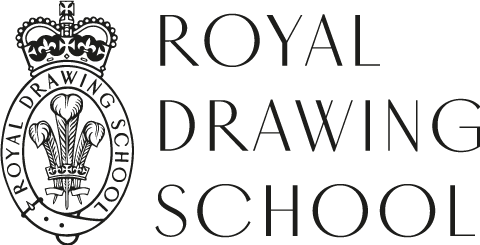Shaun Phillips
Shaun Phillips works as an Associate Features Editor at The Times newspaper. He joined a 10-week evening life drawing course at the Royal Drawing School in 2019.

Describe your work in the creative industries…
The majority of my working day is spent commissioning and editing original features for a national newspaper, including working on the ‘furniture’ (eg headlines, standfirsts, etc), and consulting with the designers on how the features are presented visually.

Why do you think drawing is important?
An appreciation of imagery is certainly important in my line of work but, generally, any form of self-expression - a song, a picture, a poem, a feature in a magazine - is important whether its revered or scrunched up and thrown in the nearest recycling bin. For the person who produces it and for those who engage with it. It can elevate the human spirit. It can sell a pair of sneakers. I’m reminded of Yoann Bourgeois’s Tentatives D’Approches D’un Point De Suspension, which I felt wonderfully encapsulated the nature of relationships when I saw it performed at the XS contemporary dance festival in Brussels last year. Last night, I was watching television, and noticed that part of that routine has been adapted in “Bounce”, the new TV commercial for Apple AirPods. It was clearly important for Bourgeois, who created it, it was important for those like me who were moved when they saw it performed, and it's important for Apple, who believe that this variation on it of it will influence the public into buying its products.
Personally, I didn’t draw at all, really, until I attended the Royal Drawing School course. Other than manipulating words for a living, my most creative outlet was probably taking photos on my iPhone and posting them on Instagram. However, it was an incredible experience to devote one night a week for 10 weeks to something that was out of my comfort zone. I gained a lot from it, and would definitely like to do it again.

How did you hear about the Royal Drawing School public courses?
I
didn’t. It was a birthday present, and the course was chosen purely for convenience - it was the only one I had a good chance of making each week. When I first walked through the door of the studio, I had no expectations. In fact, I was half-expecting to be
sketching bottles, not bottoms. The nakedness overwhelmed everything for a few minutes, but I found it amazing how quickly it ceases to be significant, such is the focus required to, say, draw a pose in 10 minutes. The two-and-half hour classes were exhilarating.
How has this course helped to develop your drawing practice?
As I hadn’t been in an art class for 40 years, I was expecting it to be very prescriptive - this is how to hold a pencil, etc. Over time I came to appreciate the more subtle nature of the tuition and the complementing teaching styles of Sharon and Rob. Yes, advice on how to position an easel, and where to stand in relation to it, was proffered, and one-on-one pointers about technical aspects of drawing - how to think about light and shade, for instance - but for me, the most interesting element to the teaching was the way in which it impacted on my way of seeing as much as it did on my style of drawing.
It was also fascinating to see how other people interpreted the same visual stimuli as myself, albeit while standing in slightly different places in the studio. That I was one of the least competent artists in the room, if not the worst, became progressively less important to me as the weeks progressed.

In what way has this course impacted your professional practice?
I
was listening to Sir Tim Waterstone on Desert
Island Discs today, and he mentioned
how his teacher once asked him to tell her what DH Lawrence’s Odour
of Chrysanthemums was about, and when
he gave her an outline of the story, she said: “No, no darling - what does it mean?”
In my work, the challenge is to encourage writers not simply to list a bunch of facts, but to tell a compelling story which means something. I frequently tell those who submit articles for consideration that the devil is in the small details, but it is possible
to have too much detail - was it necessary to inform you that Sir Tim’s teacher was called Mrs Austin? And all the information in the world won’t save a feature that lacks emotional depth. The art class has taught me that one slash or smudge of charcoal can
convey so much, and that an image’s resonance isn’t dependent on capturing all of the information taken in by the eye. It's useful to be reminded of this when working with words.
To find out more about public courses and to book click here
https://www.royaldrawingschool.org/courses/public-courses/
